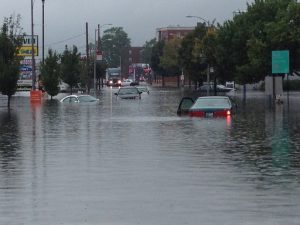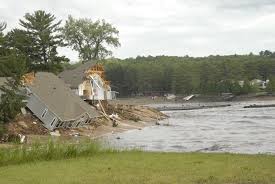
Anywhere it rains, it can flood. Most of us, when we hear the word “flood” think of overflowing rivers. But for most homeowners, a flood following a heavy rainfall is more along the lines of water spilling in through a window well or coming in through a lower-floor door. This can cause very much a grey area when it comes to flood insurance.
Flooding is the #1 natural hazard in the US. Even an inch of water can cause thousands of dollars in damage.
The situations that cause flooding—heavy rain, groundwater, or new development —can happen anywhere. In fact, one in five flood insurance claims comes from someone in a low- or medium-risk area. This is why, for many homeowners, flood insurance is an essential layer of protection. Adding flood insurance to your home-insurance package means you’re covered if a water main ruptures or a swimming pool collapses, and your home floods – situations not usually covered by standard policies.
That’s right, most basic homeowner policies don’t protect against flood damage. Neither do most business-owner policies. Only flood insurance can cover damage caused by a water accumulating in your subdivision or a drain burst.

FEMA, the Federal Emergency Management Agency, recommends flood insurance to everyone. “There are still millions of Americans at significant risk of a flood damaging or destroying their homes. To protect against flooding and its consequences, all at-risk homeowners need to buy and maintain a flood-insurance policy.”
As you can imagine, there are rules and restrictions. For example, damage caused by moisture, mildew or mold may not be covered. Damage to your basement’s contents may not be covered. Especially susceptible things like fire arms or currency may not be covered. The good news is, those coverages are available. The cost of premiums vary based on the amount of coverage you need, what’s covered and your property’s risk. Check with us to find out more.
If you decide to purchase flood insurance, a federal flood policy would cover rebuilding costs up to $250,000. You can also get a NFIP (National Flood Insurance Program) policy to cover up to $100,000 in possessions. If your home would cost more than $250,000 to rebuild, you need private flood insurance called excess coverage.
Consider purchasing flood coverage sooner rather than later. Keep in mind there’s often a 30-day wait after purchase for a policy to take effect. So call me today about flood insurance. It’s rainy day protection that could help save your most valuable investment: your home or business.

